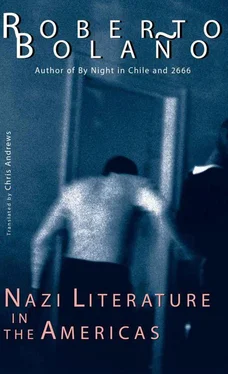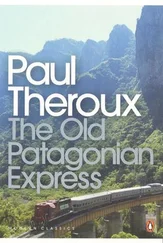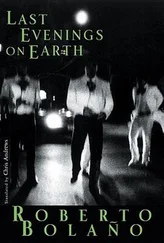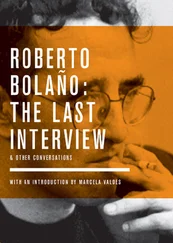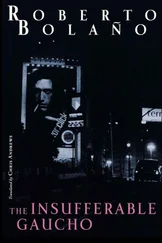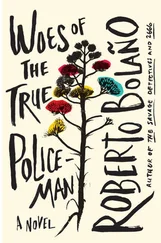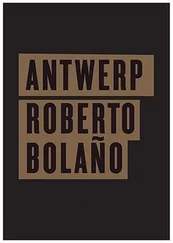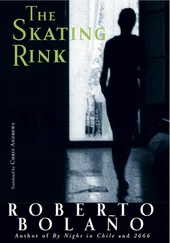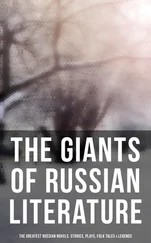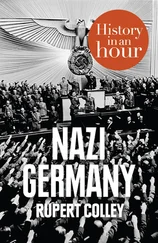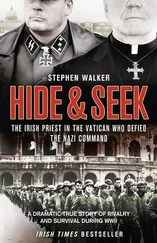Until the triumph of the revolution, that is, for almost all of his working life, Pérez Masón taught graduate-level French literature classes. During the fifties he tried unsuccessfully to cultivate peanuts and yams in his inspiring little field near Pinar del Río, which was eventually expropriated by the new authorities. There are endless stories in circulation about his life in Havana after getting out of jail, most of them pure fiction. He is said to have been a police informer, to have written speeches and tirades for one of the regime’s well-known political figures, founded a secret society of fascist poets and assassins, practiced Afro-Cuban rituals, and visited all the island’s writers, painters and musicians, asking them to plead his cause with the authorities. All I want is to work, he said, just work and live doing the only thing I know how to do. That is, writing.
At the time of his release from prison he had finished a 200-page novel, which no Cuban publisher dared to take on. The action took place in the sixties, during the early years of the literacy campaign. It was an impeccably accomplished book, and the censors sifted its pages searching for encrypted messages, but in vain. Even so, it was unpublishable, and Pérez Masón finally burned the only three manuscript copies. Years later, in his memoirs, he would claim that the whole novel, from the first to the last page, was a handbook of cryptography, a “Super Enigma,” although of course he no longer had the text to prove it, and the exiled Cubans of Miami, who had not forgotten his early and somewhat hasty hagiographies of Fidel and Raúl Castro, Camilo Cienfuegos and Che Guevara, received his assertion with indifference, if not disbelief. Pérez Masón answered them by publishing a curious novella under the pseudonym Abelard of Rotterdam: an erotic and fiercely anti-USA fantasy, whose protagonists were General Eisenhower and General Patton.
In 1970, or so Pérez Masón claims in his memoirs, he managed to found a group called Artists and Writers of the Counterrevolution. The group consisted of the painter Alcides Urrutia and the poet Juan José Lasa Mardones, two entirely mysterious individuals, probably invented by Pérez Masón himself, unless they were pseudonyms used by never-identified pro-Castro writers who at some point went crazy or decided to play a double game. According to some critics, the acronym AWC secretly stood for the Aryan Writers of Cuba. In any case the Artists and Writers of the Counterrevolution or the Aryan Writers of Cuba (or the Caribbean?) remained entirely unknown until Pérez Masón, who by that stage was comfortably settled in New York, published his memoirs.
The years of his ostracism are shrouded in legend. Perhaps he was jailed again, perhaps not.
But in 1975, after many failed attempts, he managed to get out of Cuba and settle in New York, where he devoted his time and energy — working more than ten hours a day — to writing and polemics. He died five years later. Surprisingly, his name figures in the Dictionary of Cuban Authors (Havana, 1978), which omits Guillermo Cabrera Infante.
Concepción, 1920–Valdivia, 1961
A few hagiographies of Pedro González Carrera have come down to us; all concur in affirming, and perhaps with good reason, that his work was as brilliant as his life was dull. He came from a humble background, worked as a grammar school teacher, got married at twenty and fathered seven children; his life was a series of moves from post to post — always in small towns or mountain villages — and economic hardships, seasoned with family tragedies and personal affronts.
His first poems were adolescent imitations of Campoamor, Espronceda and the Spanish Romantics. At the age of twenty-one, he was published for the first time in Southern Flowers , a magazine devoted to “agriculture, stockbreeding, education and fishing,” edited at the time by a group of grammar school teachers from Concepción and Talcahuano, whose leading light was Florencio Capó, a friend of the poet since childhood. At twenty-four, according to his biographers, González tried to get a second poem published, this time in the Journal of the Pedagogical Institute of Santiago . Capó, who by then had moved to the capital and was among the journal’s contributors, submitted the poem, as he would later say, sight unseen, and it was published along with twenty other texts by as many poets, who were teachers in Santiago or, for the most part, in the provinces, and who made up the core of the magazine’s readership. The scandal was immediate and momentous, albeit limited to Chile’s teaching community.
The poem was a far, far cry from the blandishments of Campoamor; in thirty precise and limpid verses, it vindicated Il Duce’s vilified armies and the derided courage of the Italians (who, at the time, in both pro-Allied and pro-German circles, were assumed to be a race of cowards; for instance, in relation to a possible border conflict with the Italianized Argentineans, a Santiago politician had famously remarked that with a company of good Chilean border guards the government could halt and rout a division of invading wops), while also, and here lay its originality, denying Italy’s flagrant defeat, and promising an ultimate victory, to be achieved “by novel, unexpected, marvelous means.”
As a result of the furor — of which González, teaching at the time in a remote village somewhere near Santa Bárbara, was informed by three letters, in one of which Capó disapproved of González’s position, reaffirmed his friendship and washed his hands of the whole matter — the magazine Iron Heart attempted to contact the poet, and the Ministry of Education added his name to a long and futile list of possible Fascist fifth columnists.
His next venture into print dates from 1947. It consists of three poems which blend lyric and narrative impulses, as well as modernist and surrealist metaphors, employing images that are, at times, disconcerting: González sees men in armor, “Merovingians from another planet,” walking down endless wooden corridors; he sees blond women sleeping in the open beside putrid streams; he sees machines whose functions he dimly intuits as they move through dark nights, their headlights shining “like diadems of canine teeth.” He sees, but does not describe, acts that frighten him, but to which he feels irresistibly drawn. The action unfolds not in this world but in a parallel universe where “Will and Fear are one and the same.”
The following year, he published another three poems in Iron Heart , which by then had moved its editorial operations to Punta Arenas. These poems revisit the same scenes and recreate the same atmospheres as the previous three, with slight variations. In a letter to his friend Capó, dated March 8, 1947, along with the usual complaints about his job and tales of familial woe, González reveals that his poetic illumination took place in the summer of 1943, during which he was visited for the first time by the extraterrestrial Merovingians. But did they visit him in a dream or in reality? On that point González remains unclear. In the letter to Capó, he reflects at length on glossolalia, epiphanies and the miraculous images that appear at the ends of tunnels. He explains how, having worked until nightfall in his little country school, feeling very sleepy and hungry, he tried to get up and go home. Unsuccessfully, at least in part, as far as one can tell from his account. An hour later he woke up in a nearby field, lying on the ground, face up, under an exceptionally starry night sky, with all of the poems, from the first word to the last, in his head. Having read the copy of Iron Heart sent by González along with his letter, Capó advised his friend to make an urgent request for a transfer, or else the solitude would end up driving him crazy.
Читать дальше
